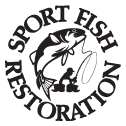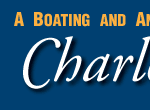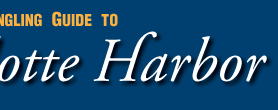CONTACT US:
Florida Fish and Wildlife
Conservation Commission
Fish and Wildlife
Research Institute
100 Eighth Avenue SE
St. Petersburg, Florida 33701
727-896-8626
|
|
|
Charlotte County
UF/IFAS Extension
Florida Sea Grant
25550 Harbor View Rd #3
Port Charlotte, Florida 33980
941-764-4340
|
|
|

|
|
Funding for this project was obtained through grants from the West Coast Inland Navigation District and Charlotte County.
|

|
|
Additional funding for this project was obtained through the Federal Aid in Sport Fish Restoration Fund.
|
|
|

|
Charlotte Harbor is a large open-water estuary in Florida, encompassing nearly 350 square miles and bordering Charlotte and Lee counties. The harbor's sprawling watershed covers a land area over ten times as large, at 4,700 square miles and covers portions of seven counties.
The harbor is host to a wide range of habitats, both in the water and on land. Seagrasses, mangroves, salt marsh and mud flats, and oyster reefs are five habitats that are important to animals within Charlotte Harbor. Seagrasses provide shelter for many small fish, crabs, and worms.
They also also help stabilize shifting sands on the bottom of the harbor and improve water clarity by trapping fine sediments and particles. Mangroves provide many of the same benefits, as well as help stabilize the shoreline and help protect it from wave action.
Mangroves also serve as nesting sites for many bird species. Salt marshes, while not as expansive as in north Florida or the Panhandle, are no less important. They also provide habitat for small fish and crabs and help protect the shoreline from wave action.
Mud flats are home to clams, crabs, and burrowing worms, which serve as food for many wading birds and fish. Lastly, oysters, located mostly near rivers, are a popular habitat for red drum and snook, which feed on small fish and crabs.
Additional information about these habitats can be found under Native Habitats.
|
With its wide ranging habitats, Charlotte Harbor is also home to wide variety of animals. These animals can range in size from a fraction of an inch-long (many invertebrates and small fish), to weighing over 1,000 pounds and 12 feet in length (the Florida manatee). Most animals live here year-round, while others briefly stop by (white pelican). Residents and visitors to the harbor will often stop and spend some time watching a wading bird chase fish along a shoreline or a dolphin swim by. There is always something to see in Charlotte Harbor.
Animals of the Harbor provides information about a few of Charlotte Harbor's residents: Florida manatee, sea turtles, and birds.
|
For more information about the habitats of Charlotte Harbor and many of the animals that call it home, please visit the following Web sites:
FWC's Fish and Wildlife Research Institute
Charlotte County UF/IFAS Extension, Florida Sea Grant
Charlotte Harbor National Estuary Program
|
If you have any questions, comments, or suggestions about this Web site, please e-mail us at Boating_Guides@MyFWC.com.
Would you like to receive notices of changes to this Web site and the Boating and Angling Guide to Charlotte Harbor? If so, please e-mail us and include SUBSCRIBE-CHARLOTTE in the subject line.
|




















